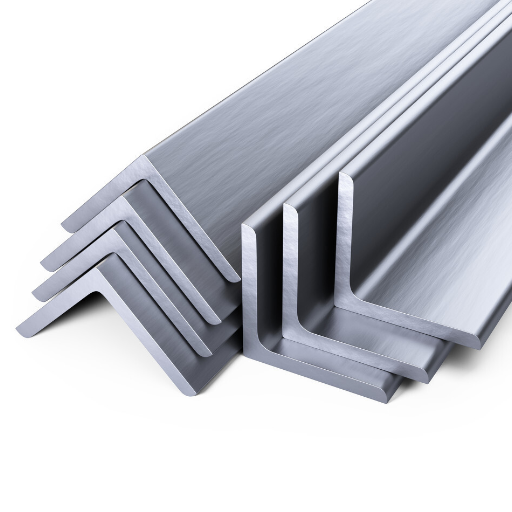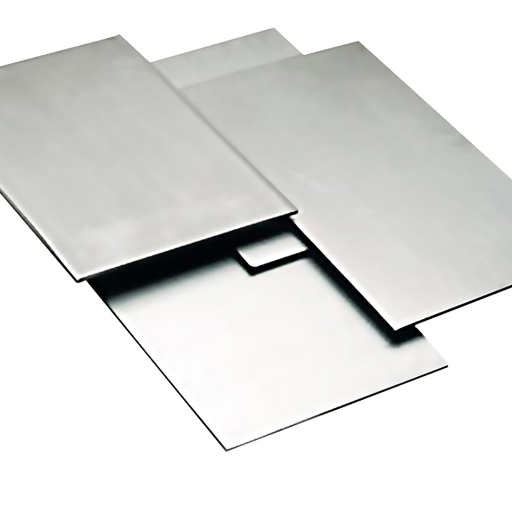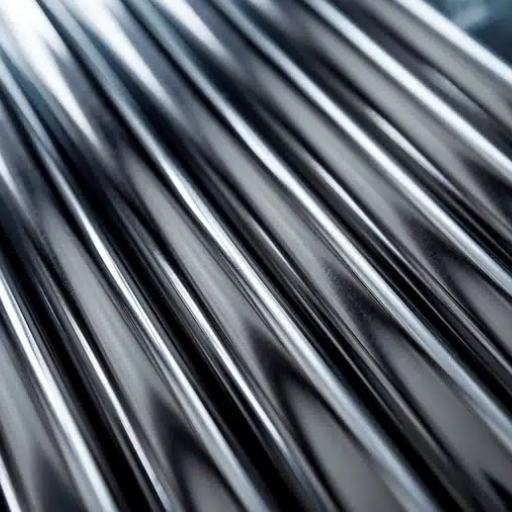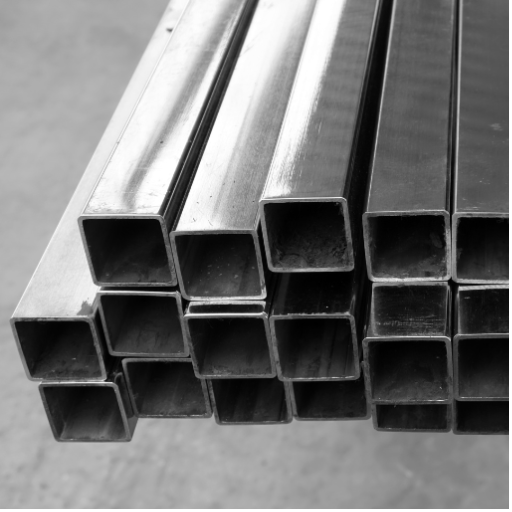Industrial applications concern the selection of correct materials that impact performance, durability, and cost. A pair of the most commonly used alloys is that of Hastelloy and stainless steel, exhibiting excellent properties and certain capabilities. But how do you choose the best materials for your needs? This article seriously compares Hastelloy versus stainless steel while touching on chemical composition, mechanical properties, corrosion resistance, and the most fitting applications. Suppose you are in need of battling harsh chemical environments or looking at an economic option for structural applications. In that case, surely, getting a grip on the notions underlying the differences will help you make an informed decision for suitability to your requirements.
Introduction to Hastelloy and Stainless Steel
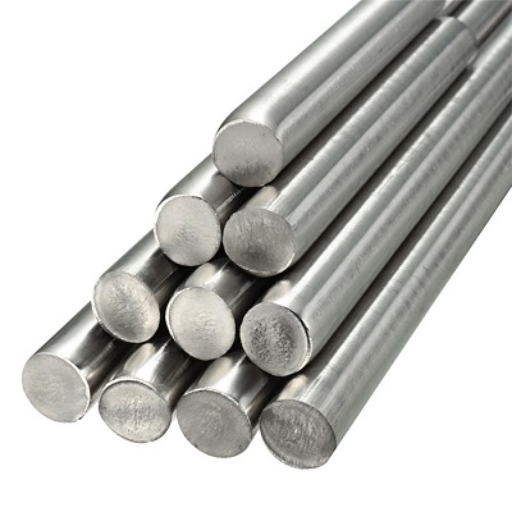
Both are very popular materials in industrial and engineering realms, with each following a set of characteristics geared to certain needs. Sporadically resistant to corrosive action–particularly in grossly chemical environments–Hastelloy is suitable in industries such as chemical processing and marine engineering. Meanwhile, stainless steel, being mostly iron, chromium, and other alloying elements, is well-suited for strength, versatility, and low cost. Its corrosion resistance acts differently from grade to grade, the relation depending on the application of construction, automotive, and food processing. A custom fit has to be given by studying these differences, as per environmental considerations and performance requirements.
What is Hastelloy?
Hastelloy is a trademarked name given to a group of corrosion-resistant metal alloys that are basically nickel in composition to various degrees, varied by molybdenum, iron, cobalt, and chromium. Being an excellent choice for resisting severe chemical environments, it finds use in companies such as chemical processing, aerospace, and marine engineering. It is resistant particularly against strong oxidizers and strong reducing agents, as well as pitting or crevice corrosion, even when the conditions are high temperature and an acidic environment. Thus, popular grades such as Hastelloy C-276 and Hastelloy C-22 find application in situations where resistance to acidic media such as hydrochloric, sulfuric, and phosphoric acids is needed without sacrificing mechanical strength. Due to great strength and durability, the material is essential for heat exchangers, reactors, pressure vessels, and pipelines where superior performance and long-term reliability are necessary.
What is Stainless Steel?
Stainless steel is considered a category of iron alloys, with extraordinary resistance to rusting and corrosion, mainly due to the presence of chromium at a chromate content of 10.5% minimum. The formation of a passive chromium oxide layer by chromium on the surface prevents further oxidation, providing protection to the material in active environments. Further, stainless steels are of grades and types, in particular: austenitic, ferritic, martensitic, duplex, and precipitation hardening, all depending on the mechanical properties and corrosion resistance targeted for specific applications.
Grades 304 and 316 stainless steel are really versatile and resistant to oxidation and chemical attack; this makes them suitable for things like food processing, medical devices, and chemical equipment. Duplex stainless steels possess superior tensile strength but with corrosion resistance and enjoy considerable applications within the oil and gas industry and marine environments. The adaptability, recyclability, and long life of stainless steel make it so popular across various industries such as construction, automotive, aerospace, and healthcare. Since metallurgy was established, steels have always continued to develop ever since, until today, toward stainless steels, thereby offering the best possible solutions for extreme conditions and demanding applications.
Overview of Alloy Types
- Ferrous Alloys
Ferrous alloys make iron the primary base metal. These are usually carbon steels, stainless steels, and cast irons. The alloys are basically known to include strength, toughness, and versatility. The application of chromium and nickel in stainless steels offers exceptional corrosion resistance and durability needed in construction and in marine settings.
- Non-Ferrous Alloys
These alloys do not in any significant manner contain iron, which appears to render them highly resistant to rust and corrosion. With their lightly properties and good conductivity, non-ferrous alloys such as aluminum alloys, copper alloys, and titanium alloys have been highly sought after. Aluminum alloys are highly favorable in aerospace engineering due to their top-to-bottom ratio of strength to weight; copper alloys such as brass and bronze are mainly used in electrical applications and as decorative materials.
- Superalloys
Superalloys are designed for high performance, even in stringent environmental conditions of very high temperature and corrosive atmospheres. These alloys are generally based on nickel, cobalt, or iron and possess superior mechanical strength and resistance to deformation from a thermal creep. These are essentially used in turbine blades, jet engines, and other energy-generation equipment of utmost importance.
- Shape Memory Alloys (SMAs)
Shape memory alloys like nickel-titanium (Nitinol) have the ability to deform into a convenient fabrication shape and return to its original shape upon heating. These alloys are used in medical applications such as stents and braces for teeth, along with robotics and other precision engineering applications.
- Metal Matrix Composites (MMCs)
Comparative Analysis of Properties
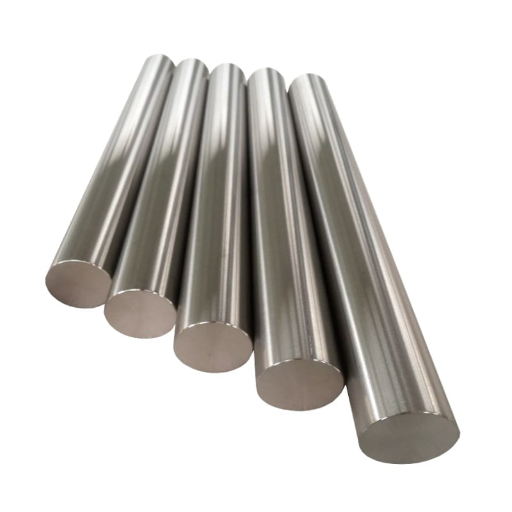
Exporting the difference in properties between Shape Memory Alloys and Metal Matrix Composites gives:
- Strength and Durability
SMAs have a medium strength but have the property of recovering large deformation from the shape memory mechanism, while MMCs exhibit very high strength and wear resistance due to reinforcement from ceramic or carbon fiber materials and are, therefore, preferable for very high-stress environments.
- Thermal Stability
MMCs stand out in their ability to remain thermally stable even at high temperatures, where they stop degradation of properties; however, SMAs have in-built operating temperature ranges and rely on thermal activation in achieving shape recovery prowess, which limits their applications in extreme-temperature surroundings.
- Applications
SMAs find more use in applications demanding actuation and flexibility at a very precise level; these include medical applications and robotics. Contrastingly, MMCs fit better for structural applications that require high-load capabilities, such as those in the aerospace and automotive industries.
From this analysis, it is clear that these properties will dictate whether SMA or MMC is selected for the performance requirement of the intended application.
Corrosion Resistance: Hastelloy vs Stainless Steel
Hastelloy and stainless steels are prominently employed wherever corrosion proves crucial. Hastelloy, a nickel-molybdenum alloy, is very well known in the metal industries for its superb corrosion resistance when challenged by very severe environments comprising strong oxidizers, reducing agents, and acid situations such as hydrochloric acid or sulfuric acid. The high resistance of Hastelloy to pitting, crevice corrosion, and stress corrosion cracking makes it the metal of choice for chemical process plant equipment, marine environments, and flue gas scrubbers.
Stainless steel of the kind 316L and duplex also renders corrosion resistance against attack owing to the chromium and ni composition, giving rise to a passive oxide layer. On the contrary, stainless steel is more susceptible to localized corrosion attacks like pitting and crevice corrosion than Hastelloy in cases under high chloride content or acidic media.
Heat Tolerance and Thermal Properties
Hastelloy and stainless steel’s thermal properties determine their applicability to higher temperature operations. Hastelloy suffers the most competent heat resistance up to around 2200°F (1204°C), beyond which it starts losing its structural integrity. Hence, it is used in environments dealing with extreme temperatures such as chemical reactors or heat exchangers. Hastelloy’s lesser coefficient of thermal expansion also prevents distortion, allowing good dimensional stability in thermal cycling.
The stainless steel certainly resists heat quite well, too, but typically falls short of Hastelloy. Depending on the grade, stainless steel may resist temperatures from 1000°F to 1600°F (538°C to 871°C) before grade-appropriate thermal degradation sets in. There are grades of stainless steel, such as 310 or 321, which are designed to withstand high temperatures even better, but could yet be a bit under par when severe conditions are at play with Hastelloy. Thermal conductivity is yet another important, in which stainless steel tends to show slightly higher conductivity as compared to Hastelloy, thus allowing better heat transfer in some scenarios and still maintain reasonable resistance against oxidation and scalling.
Benefits and Drawbacks of Each Material
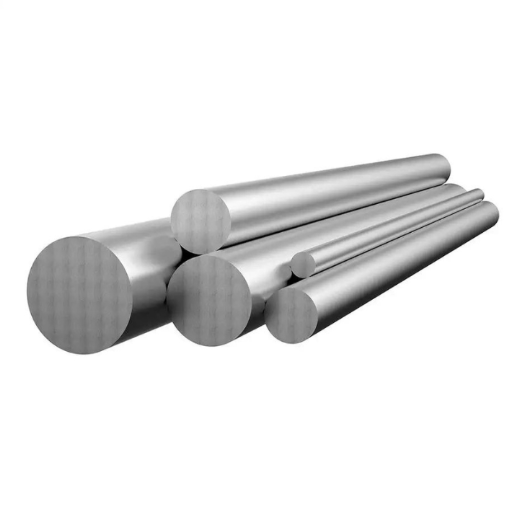
Stainless Steel:
Benefits: Availability of stainless steel is very vast and cost-effective and with good thermal conductivity, it is best used in the domain of heat transfer. It has good resistance as well to corrosion and scalling under moderate conditions.
Drawbacks: Can sometimes suffer when faced with extreme environments, mostly if these conditions favor high temperature or corrosiveness.
Hastelloy:
Benefits: Hastelloy can stand up to extreme chemical corrosion and high temperatures in an average environment, in terms of its resistance to oxidation and scaling, and cerebral industrial applications, such as chemical processing and aero-engineering.
Drawbacks: Usually Phore expensive and less available than stainless steel, and its thermal conductivity can affect the transfer of heat in some applications.
Advantages and Disadvantages of Hastelloy
Advantages:
- Exceptional Corrosion Resistance
Hastelloy, with its great reputation for corrosion resistance in a wide range of harsh environments, deals with the existence of strong oxidizers, reducing agents, and chloride-containing media. It outshines pitting, crevice corrosion, and stress corrosion cracking, giving a longer life and trustworthy realization in aggressive environments such as chemical reactors or pollution control systems.
- High-Temperature Strength
At this temperature in many cases, above 1,000°F (538°C), the composition retains its mechanical strength, and structural integrity stands as an ideal candidate for heat exchangers, industrial furnaces, and gas turbines, where severe thermal conditions prevail.
- Versatility in Chemical Environments
Hastelloy alloys, especially C-276 and C-22 grades, have a vast diversity of chemical exposure and usefulness; they match with both oxidizing and reducing agents, thus permitting their use in mixed acid environments where most other materials will not stand.
Disadvantages:
- High Cost
One of Hastelloy’s chief disadvantages is its high price compared to certain other materials, such as stainless steel or carbon steel. This high price is due to the high content of nickel and molybdenum required to impart superior corrosion resistance. According to industry data, the price of Hastelloy is a mere five times that of stainless steel, rendering it fairly unsuitable for any cost-sensitive application.
- Susceptibility to Stress Corrosion Cracking in Specific Environments
Though it resists almost every type of corrosion, Hastelloy is vulnerable to stress corrosion cracking (SCC) in particular conditions, largely in warm chloride environments. It has been found through studies that protracted exposure to these conditions may initiate SCC, affecting Hastelloy’s reliability in marine or high-salinity applications.
- Density and Weight
The density of Hastelloy is relatively high, about 8.64 g/cm³, which is heavy compared to other materials common in engineering applications, such as aluminum and some grades of stainless steel. Weight can be a disadvantage factor in applications such as aerospace or transportation, where weight reduction is very significant.
Advantages and Disadvantages of Stainless Steel
Advantages:
- Corrosion Resistance
Stainless steel, for corrosion resistance, is the least resistant type that can be exposed to the environment with moisture, chemicals, or extreme temperatures. For example, austenitic grades like 304 and 316 stainless steel stand against rust exceptionally well under both marine and acidic situations. Such durability means less maintenance during a very long service life if compared to other materials.
- Strength and Durability
Austenitic stainless steels possess tensile strength, which carries the structural symmetry in stress retardants or heavy loads. For example, duplex stainless steel grades can yield stresses over 65 ksi (450 MPa), and they find good practical uses in heavy structural or industrial manufacturing fields. Its durability equates to long-term savings and reliability in building or manufacturing.
- Hygienic Properties
Due to stainless steel’s non-porosity, contamination, dirt, and bacteria are less likely to occur in industries such as food processing, medical equipment, and pharmaceuticals; thus, it is a favorable material in these industries. Its easy cleaning property scores a plus point in ensuring that all surfaces meet stringent sanitary criteria.
Disadvantages:
- High Initial Cost
One disadvantage is the rather high initial cost associated with stainless steel compared to other materials such as carbon steel and aluminum. For instance, steel grade 304 stainless may be one-and-a-half to three times more expensive than mild steel and this can constitute a severe limitation according to budgetary constraints, mainly if there is a large-scale quantity involved.
- Thermal Conductivity
Being lower in thermal conductivity than copper or aluminum makes stainless steel not integrate efficiently wherever conductance of heat is essentially required. For example, the thermal conductivity of 304 stainless steel is around 16 W/m·K; that of copper, however, is 398 W/m·K. Note heat exchangers!
- Susceptibility to Chloride Stress Corrosion Cracking
Real-World Applications

- Construction and Architecture
- Medical Industry
Stainless steel has excellent biocompatibility. Sterilizable, corrosion-resistant treatments make it ideal for the manufacture of surgical instruments, implants, and hospital instruments. Medical grade stainless steels, such as 316L, are specially designed to withstand cycles of sterilization and exposure to body fluids without degrading.
- Food and Beverage Industry
In food and beverage production, processing, and packaging, stainless steel finds widespread applications. Types such as 304 are preferred for their stain- and corrosion-resistance and also for being easy to clean, fulfilling hygienic requirements. An example would be stainless steel tanks used for wine fermentation, and also stainless steel tanks employed in dairy processing to protect the integrity of the product being processed.
- Energy and Power Generation
It finds application in energy: in pipelines, heat exchangers, and reactor vessels, stainless steel will be able to resist very high temperatures and exposure to chemicals. It is also employed in the new energy solutions such as solar energy, forming structural frames and supporting components. Furthermore, stainless steel is one of the major materials for core components and fuel rods for nuclear power reactors.
- Automotive and Transportation
Hastelloy in Aerospace and Chemical Processing
It is a super-duty, nickel-based alloy that displays excellent corrosion resistance in highly aggressive media. In the aerospace industry, the bulk of the uses are for parts subject to severe thermal and chemical stresses, including jet engine fuel nozzles and afterburners. Because of its capability to resist deformation at high temperature, Hastelloy offers service life assurances to make it worth the cost in extreme operating conditions.
For similar reasons, the necessity in chemical processing is due to excellent resistance to oxidizing and reducing agents. It is heavily relied upon to construct reactors, heat exchangers, and pressure vessels, mainly in industries that deal with corrosive media such as hydrochloric acid, sulfuric acid, or chlorine. The alloys Hastelloy C-22 and C-276 are in gigantic demand and are also called generalists for resisting pitting, crevice corrosion, and stress corrosion cracking. Such properties make Hastelloy an ideally selected material to ensure process integrity, safety, and life in critical industrial applications.
Stainless Steel in Marine and Construction
Unlike stainless steel with its better properties of pitting and crevice corrosion, the marine and construction industries demand high strength, durability, and corrosion resistance. Marine environments create requirements for resisting pitting and crevice corrosion, given the extremely corrosive nature of salt water and the moist atmosphere. With 316 and 316L stainless steel being Grade materials for marine environments, the steels offer resistance to chloride attack in these environments.
Also, in construction, stainless steel is used for enduring weather conditions and mechanical stress. It has been frequently applied in structures, facades, and reinforcement bars where long-term exposure to the elements will be inevitable. The rise of duplex stainless steel, such as UNS S32205, in these two sectors has been recorded and is promising, considering its excellent mechanical properties as well as corrosion resistance when compared with standard austenitic grades. The assurance of great reliability from the specific stainless steel reduces the uptake of incidents, thus making it a lucrative and sustainable option for marine and infrastructure applications.
Conclusion: Making the Right Choice
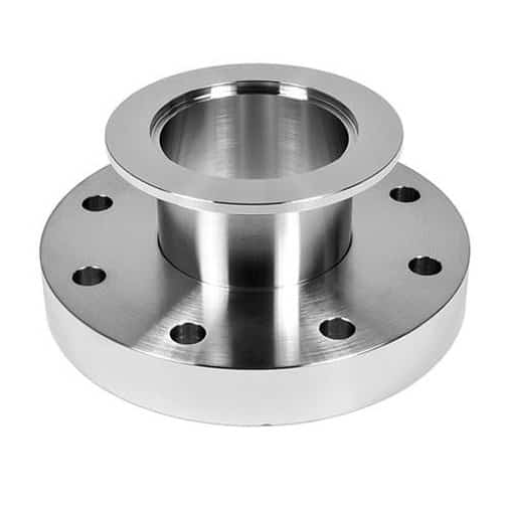
As applications define critical ones, an adequate range of factors must be considered when selecting materials for such applications- mechanical strength, corrosion resistance, and overall lifecycle cost. The duplex stainless steels, e.g., UNS S32205, provide an option that can be strongly supported and relied on due to their proven maintenance reduction. These steels are very able to maintain the structural integrity under harsh conditions, making them suitable for infrastructure and marine environments. Focusing on a smooth transition between the two could enhance the overall sustainability level of critical applications.
Summary of Key Differences
|
Key Parameter |
Hastelloy |
Stainless Steel |
|---|---|---|
|
Primary Composition |
Nickel-molybdenum alloy |
Iron-chromium alloy |
|
Corrosion Resistance |
Exceptional in harsh chemical environments |
Moderate to high, varies by grade |
|
Temperature Resistance |
High-temperature resistance, up to 1200°F |
Moderate to high, varies with grade |
|
Strength |
Extremely strong under stress |
Strong, depends on alloy and grade |
|
Weldability |
Moderate, may need specific techniques |
Excellent, widely used in fabrication |
|
Cost |
Significantly more expensive |
Relatively more affordable |
|
Applications |
Chemical processing and aerospace |
Construction, food, and medical fields |
|
Maintenance Requirements |
Low, due to excellent corrosion resistance |
Low to moderate, requires regular cleaning |
|
Longevity |
Extremely durable in extreme conditions |
Long-lasting in various environments |
|
Availability |
Specialized, less widely available |
Readily available globally |
Choosing Between Hastelloy and Stainless Steel
For cases of choosing between Hastelloy and stainless steel, the environmental factors and the specific requirements of a given application must be evaluated. When considered extensively, the superior capacity of Hastelloy, which is a nickel-based alloy, to withstand oxidation and pitting of extremely acidic or otherwise aggressive solutions makes it advantageous to consider in chemical processing amidst severe corrosive environments, whereas stainless steel loses this ability and is not considered a viable option to serve industries handling concentrated hydrochloric acid, sulfuric acid, or wet chlorine.
Depending on the particular need, stainless steels are more versatile than Hastelloy, hence probably cheaper and relatively resistant to general corrosion. For instance, advanced stainless steel grades, such as duplex stainless steels, exhibit an excellent compromise of strength with corrosion resistance and are used where structural integrity is a higher priority, for example, in marine or construction services.
The factors to be considered are operating temperature, corrosive agents, mechanical stress, and finally cost at end of life. Cost often determines preference, with the higher performance of Hastelloy used when corrosion resistance is a lead issue. Generally, stainless steel is an accepted alternative for non-aggressive applications in chemicals because it is available and cheap.
Final Considerations for Material Selection
As regards embracing any materials for selection in any industrial or engineering scenario, utmost consideration must be given in making data-driven choices, which must be compatible with the characteristics to be exhibited in the performance of the project. Progresses in material science in recent years have provided opportunities for better performance studies of alloys such as titanium, duplex stainless steel, and nickel-based superalloys under stressed or extreme conditions. Studies show that duplex stainless steel is the best option for marine and subsea environments because it offers a kind of strength-to-weight ratio, pitting corrosion resistance, and stress corrosion resistance, whilst titanium grades have been increasingly in demand for applications requiring an ultimate resistance to corrosion at high temperatures, such as aerospace and biomedical.
Industry trends also place value on the long-term cost-effectiveness of materials. Life cycle assessment (LCA), which weighs the cost of production with those of maintenance and disposal, offers the decisive criterion for choosing sustainable options. For instance, despite the high initial cost of superalloys like Hastelloy, their long life in harsh conditions could minimize instances of downtime and maintenance costs. Looking at material properties along with developing technologies will thereby ensure that the decision taken will be based on performance as well as economic factors.
Reference Sources
1. Comparison Between Stainless Steels and Nickel Alloys Through Pitting Corrosion Resistance Electrochemical Tests: Critical Pitting Temperature (CPT) was used to compare corrosion resistance between stainless steels and nickel-based alloys. Stainless steels showed better performance in CPT tests compared to nickel-based alloys due to the latter’s susceptibility to crevice corrosion.
2. Analysis of Corrosion of Hastelloy-N, Alloy X750, SS316, and SS304 in Molten Salt High-Temperature Environment: Hastelloy-N exhibited the highest corrosion resistance in molten fluoride salt (FLiNaK) at 700°C, followed by SS316, SS304, and Alloy X750. Hastelloy-N gained weight due to the deposition of corrosion products from other alloys, while others experienced significant weight loss. Corrosion initiated at grain boundaries and triple junctions, with chromium depletion being a key factor.
3. The Corrosion Wear Behaviors of Hastelloy C276 Alloy in Seawater: Hastelloy C276 showed superior corrosion resistance and lower wear loss compared to AISI 316 stainless steel in seawater. Maximum corrosion rate and wear loss occurred in 3% seawater due to the synergistic effects of corrosion and wear. Seawater reduced friction coefficients but increased wear loss compared to distilled water.
Frequently Asked Questions (FAQs)
Q: What is the difference between Hastelloy and stainless steel?
A: The difference between Hastelloy and stainless steel primarily lies in their composition and properties. Hastelloy is a nickel-based alloy, primarily composed of nickel, which grants it superior corrosion resistance compared to stainless steel, which is an iron-based alloy. While stainless steel contains varying levels of nickel and chromium, Hastelloy often has higher nickel content and includes molybdenum, enhancing its durability in extreme environments. The choice between Hastelloy and stainless steel largely depends on the specific application and the environmental conditions they will face.
Q: What are the benefits of Hastelloy?
A: The benefits of Hastelloy include excellent corrosion resistance, particularly in harsh chemical environments, making it suitable for a variety of applications. This nickel-based superalloy is known for its ability to withstand high temperatures and pressures, often outperforming standard stainless steel products in these conditions. Additionally, Hastelloy’s unique composition allows it to resist pitting and stress corrosion cracking, which can be a significant advantage in industries like chemical processing and oil and gas. Overall, its durability and reliability make it a preferred choice for critical applications.
Q: How does the chemical composition of Hastelloy differ from that of stainless steel?
A: The chemical composition of Hastelloy is distinctive due to its high nickel content, whereas stainless steel typically has a lower nickel percentage along with iron and chromium as its primary components. Hastelloy’s alloying elements, such as molybdenum and tungsten, contribute to its exceptional corrosion resistance and strength at elevated temperatures. In contrast, standard stainless steel often lacks these elements, making it less suitable for high-stress environments. This variation in composition and properties is crucial when selecting materials for specific applications.
Q: What are the applications of Hastelloy?
A: Hastelloy is used in a wide range of applications, particularly in industries that require materials with high resistance to corrosion and heat. Common applications include chemical processing equipment, nuclear reactors, and aerospace components. Its superior characteristics make it ideal for environments that involve aggressive chemicals or extreme temperatures, where standard stainless steel would likely fail. Additionally, Hastelloy wire is often used in applications that demand high performance and reliability.
Q: What are the characteristics of Hastelloy compared to stainless steel?
A: Characteristics of Hastelloy include superior corrosion resistance, high strength, and the ability to withstand extreme temperatures, which are often not matched by stainless steel. Hastelloy’s unique composition, especially its higher nickel and molybdenum content, allows it to perform well in highly corrosive environments, while stainless steel is more susceptible to rust and degradation. Additionally, Hastelloy is often more expensive than stainless steel due to its complex manufacturing process and the cost of raw materials like nickel. These factors make Hastelloy a premium choice for critical applications.


